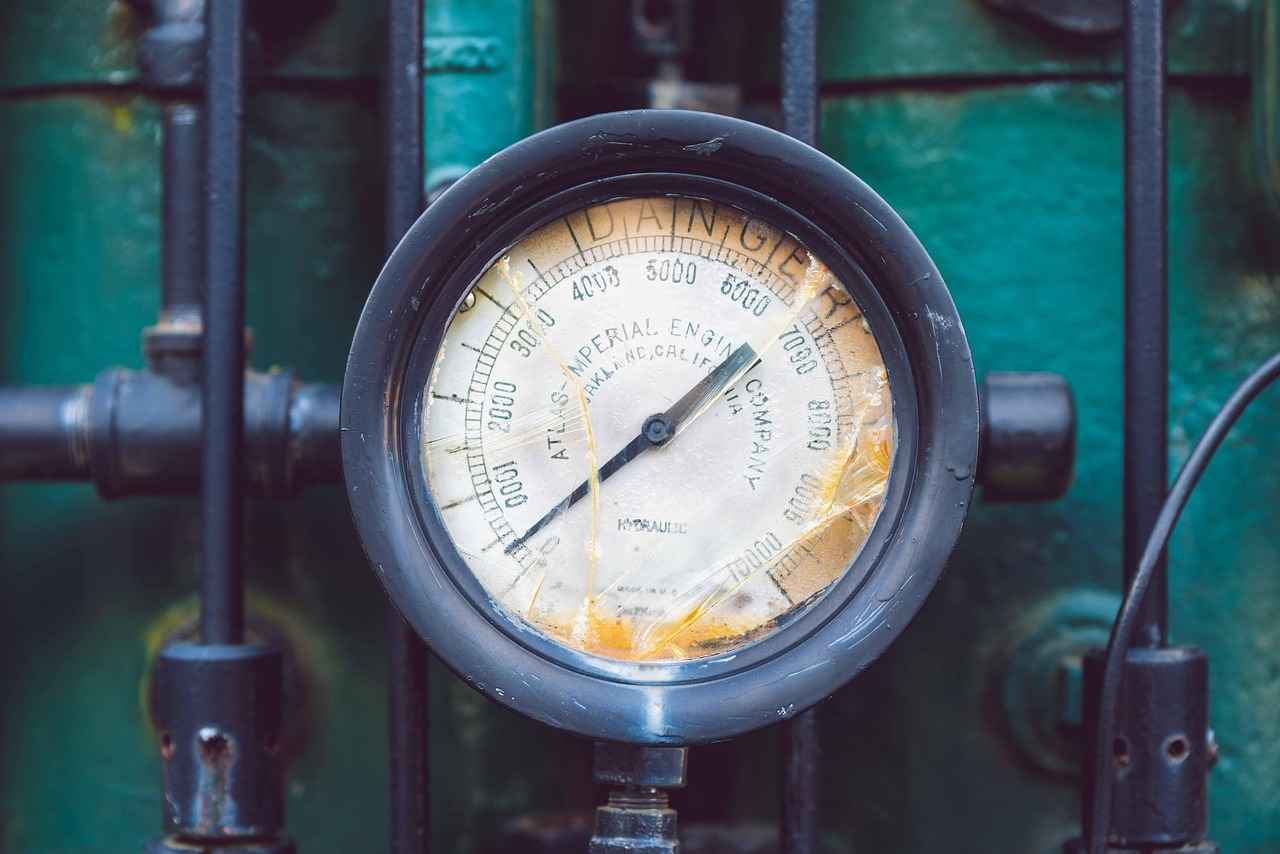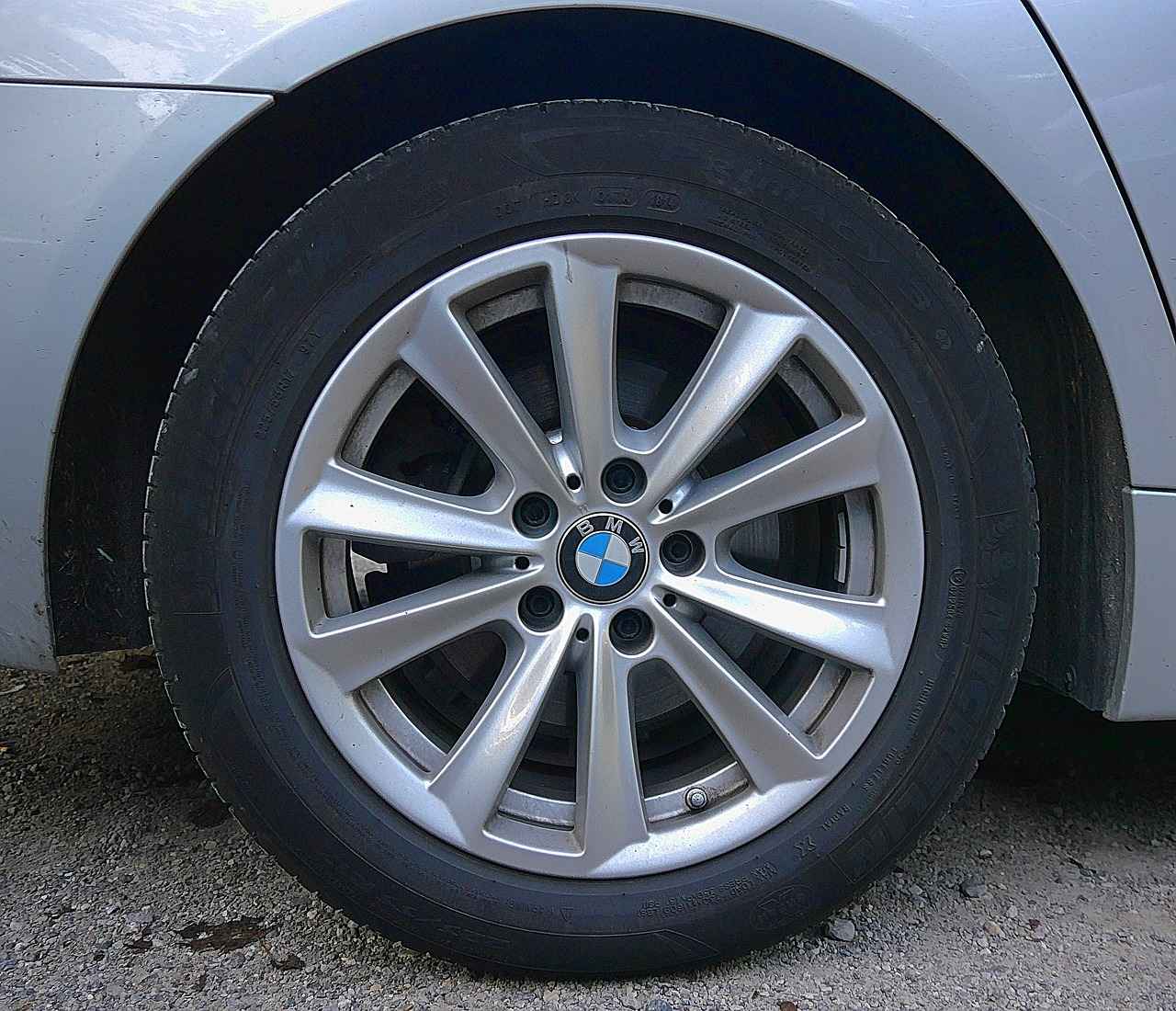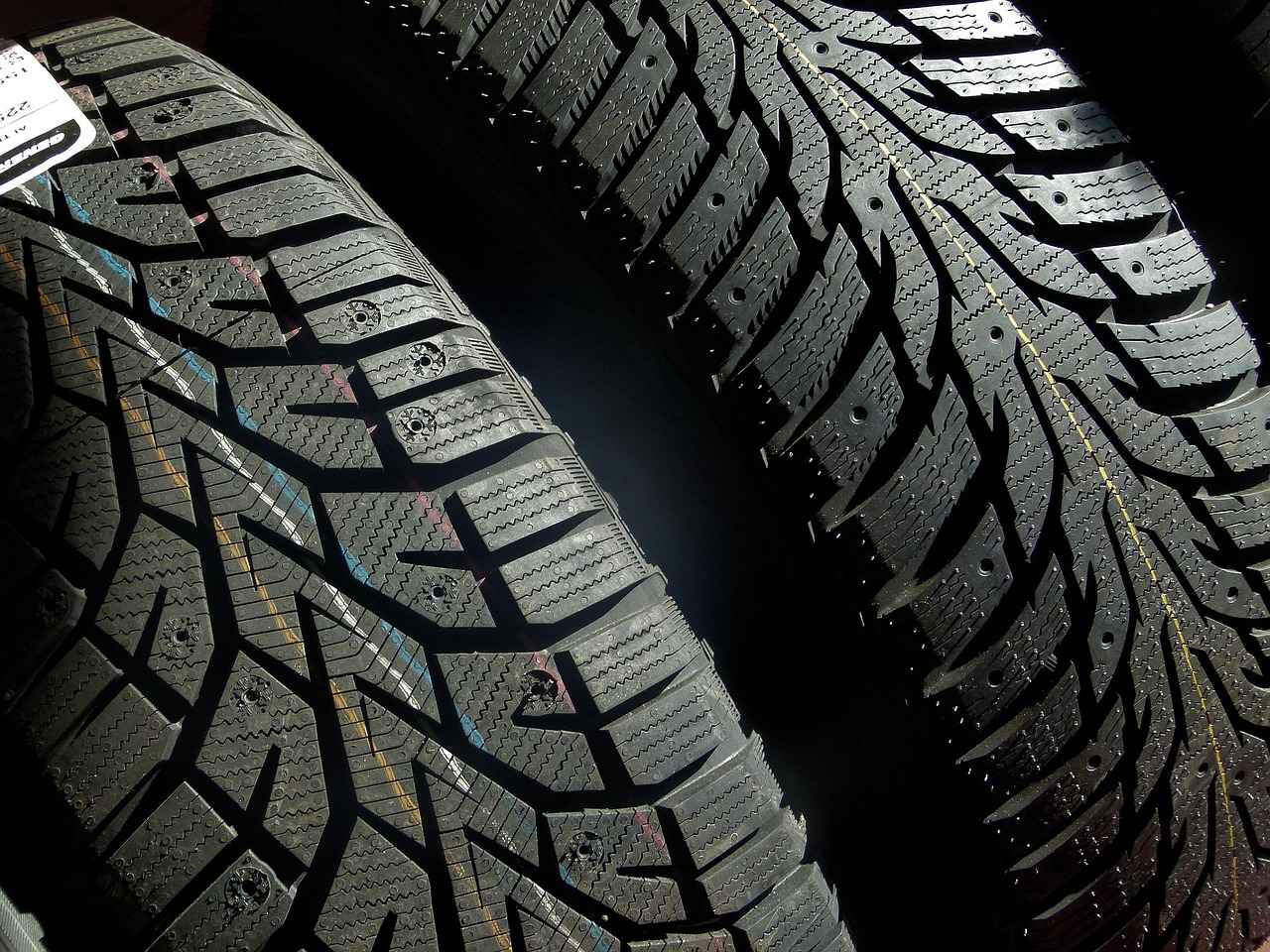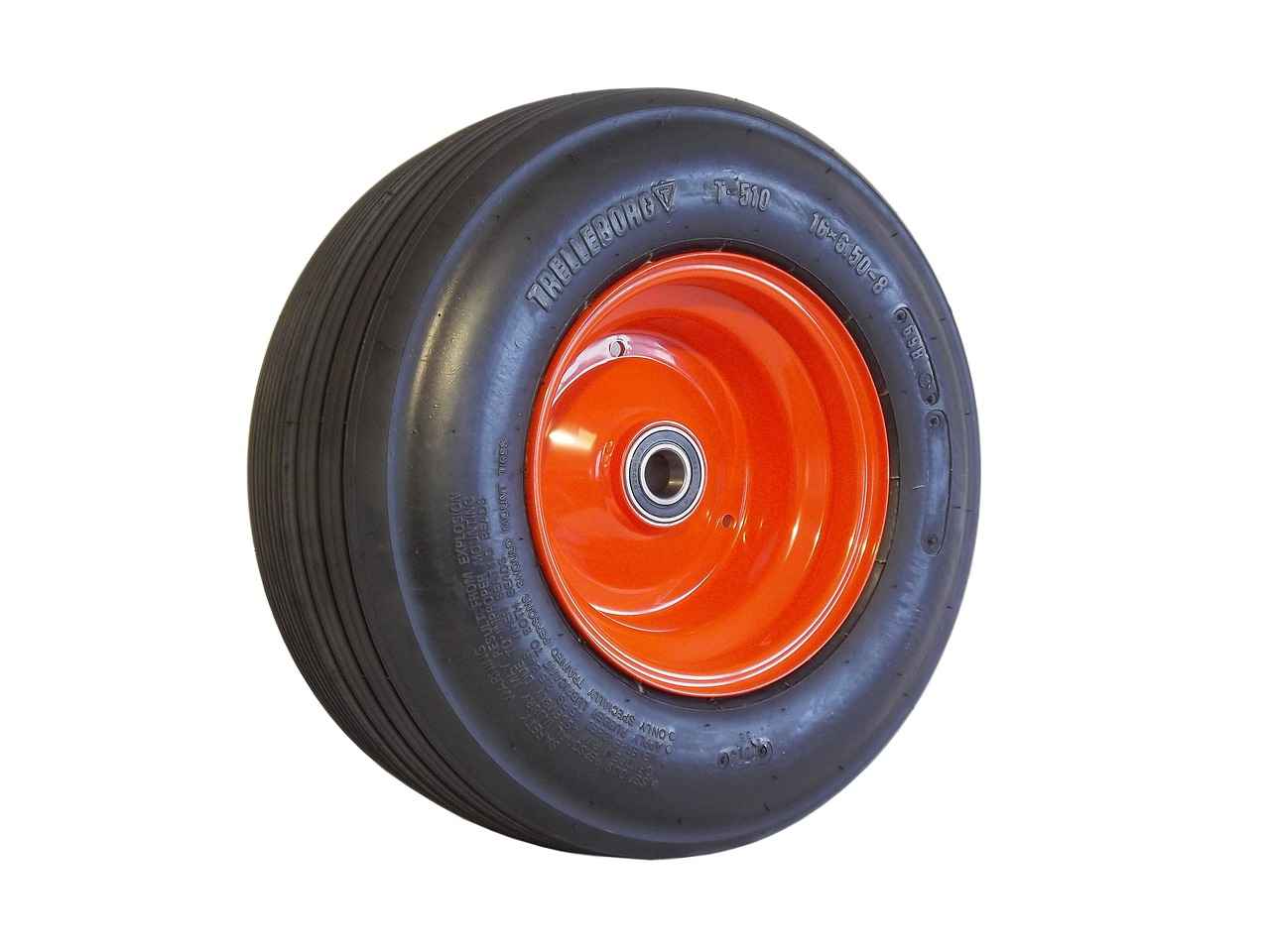This article provides a comprehensive guide on checking tire pressure for a Honda Accord, ensuring optimal vehicle performance and safety. Maintaining the correct tire pressure is essential for a smooth driving experience and enhances the overall lifespan of your tires.
Understanding the significance of maintaining proper tire pressure can improve fuel efficiency, enhance safety, and prolong tire life. Under-inflated tires can lead to increased wear and tear, while over-inflated tires can result in a rough ride and reduced traction. Regular checks are vital for every vehicle owner.
Before checking tire pressure, gather the necessary tools:
- Tire Pressure Gauge – For accurate measurement.
- Air Compressor – To inflate tires as needed.
- Valve Core Tool – Useful for adjustments if necessary.
Each vehicle has a manufacturer-recommended tire pressure. You can find this information in your Honda Accord, typically located on the driver’s side door jamb or in the owner’s manual. Always refer to these guidelines for optimal performance.
Tire pressure can fluctuate with temperature changes. It’s best to check tire pressure when tires are cold, ideally before driving. A temperature drop can cause a decrease in tire pressure, making regular checks essential.
Following a systematic approach makes checking tire pressure straightforward. Here’s how to do it:
Start by unscrewing the valve cap from the tire. This simple action prepares you to access the valve stem for pressure measurement.
Press the tire pressure gauge onto the valve stem firmly. A proper seal ensures an accurate reading, which is crucial for effective tire maintenance.
Observe the gauge’s reading and compare it to the recommended tire pressure. Understanding how to interpret these numbers is vital for maintaining optimal tire health.
If you find that the tire pressure is low, you should inflate your tires to the recommended level immediately. Use an air compressor and ensure that the pressure matches the manufacturer’s specifications to avoid performance issues.
Avoiding common pitfalls can lead to more accurate results. Frequent errors include:
- Not checking when tires are cold.
- Failing to ensure a proper seal when using the gauge.
- Ignoring the manufacturer’s recommended pressure.
Regular checks are advisable, ideally every month and before long trips. This practice helps maintain tire health and ensures your Honda Accord remains safe and efficient.
Recognizing the signs of incorrect tire pressure can prevent accidents and costly repairs. Look for:
- Unusual wear patterns on tires.
- Changes in handling or ride comfort.
- Frequent need for tire inflation.
Keeping tires at the recommended pressure offers numerous benefits, including:
- Improved fuel efficiency.
- Enhanced safety and handling.
- Extended lifespan of tires.
By regularly checking and maintaining tire pressure, you ensure a safer and more efficient driving experience in your Honda Accord.

Why is Checking Tire Pressure Important?
Maintaining the correct tire pressure is a crucial aspect of vehicle ownership that often goes overlooked. Understanding why checking tire pressure is important can lead to significant improvements in your vehicle’s performance, safety, and overall longevity. Here, we delve into the reasons why this simple routine check should be a priority for every vehicle owner.
One of the most immediate benefits of keeping your tires properly inflated is improved fuel efficiency. Under-inflated tires create more rolling resistance, which means your engine has to work harder to move the vehicle. Studies show that maintaining optimal tire pressure can enhance fuel economy by up to 3% to 4%. This translates into noticeable savings at the gas pump over time, making it a smart financial decision.
Proper tire pressure is vital for vehicle safety. Tires that are either too inflated or under-inflated can lead to handling issues, longer stopping distances, and increased risk of blowouts. According to the National Highway Traffic Safety Administration (NHTSA), under-inflated tires are a contributing factor in many road accidents. By routinely checking tire pressure, you are taking a proactive step towards ensuring the safety of yourself and your passengers.
Maintaining the correct tire pressure can significantly extend the lifespan of your tires. When tires are not properly inflated, they wear unevenly, which can lead to premature replacement. Regularly checking and adjusting tire pressure helps to promote even wear patterns, allowing you to maximize the life of your tires and save money in the long run.
Tire pressure can fluctuate with changes in temperature, typically decreasing by about 1 PSI (pound per square inch) for every 10 degrees Fahrenheit drop in temperature. This means that checking your tire pressure regularly, especially during seasonal changes, is crucial. Cold tires can lead to inaccurate pressure readings, making it even more important to check when the tires are cold, ideally before driving.
Incorporating tire pressure checks into your regular vehicle maintenance routine fosters a sense of responsibility and awareness as a vehicle owner. It not only ensures that your car is operating efficiently but also provides peace of mind knowing that you are taking every precaution to keep your vehicle safe. Regular checks can help you catch potential issues before they escalate into costly repairs.
Many vehicle owners believe that they only need to check their tire pressure when they notice a problem, but this is a misconception. Regular checks should be part of your routine, as tire pressure can change frequently due to various factors. Don’t wait for warning lights or visible signs of tire issues—be proactive in your approach to tire maintenance.
In summary, understanding the significance of maintaining proper tire pressure is essential for enhancing fuel efficiency, ensuring safety, and prolonging tire life. By making tire pressure checks a regular part of your vehicle maintenance routine, you not only improve your driving experience but also contribute to overall road safety.

What Tools Do You Need to Check Tire Pressure?
When it comes to ensuring the safety and performance of your Honda Accord, checking tire pressure is a critical task. However, before you begin this essential maintenance procedure, it is important to gather the right tools. This preparation not only makes the process smoother but also enhances the accuracy of your measurements. Below, we will explore the essential tools needed for checking tire pressure effectively.
Before checking tire pressure, it is crucial to gather the necessary tools. The following items are essential for accurate measurement and adjustment:
- Tire Pressure Gauge: This tool is vital for measuring the current pressure in your tires. There are various types available, including digital and analog gauges. Ensure you choose one that provides clear and easy-to-read results.
- Air Compressor: If you find that your tire pressure is low, an air compressor will allow you to inflate your tires to the recommended level. Many gas stations have air compressors available, or you may choose to invest in a portable one for convenience.
- Valve Core Tool: This handy tool is used to remove and replace the valve core, which is the small mechanism inside the valve stem that holds the air in your tire. Having this tool on hand can make it easier to repair any leaks you may encounter.
In addition to these primary tools, consider keeping the following items in your maintenance kit:
- Gloves: Wearing gloves can help keep your hands clean while you work, especially if you’re dealing with dirt or grime around the tires.
- Flashlight: If you’re checking tire pressure in low-light conditions, a flashlight can help you see the valve stem and gauge clearly.
- Notebook or App: Keeping track of your tire pressure readings can help you monitor changes over time. Whether you prefer a physical notebook or a mobile app, recording these details can assist in maintaining optimal tire health.
Once you have gathered all the necessary tools, you will be ready to proceed with checking your tire pressure. Remember, maintaining the correct tire pressure is not just about enhancing performance; it is also about ensuring your safety on the road. Properly inflated tires improve fuel efficiency, enhance handling, and reduce the risk of blowouts.
In summary, equipping yourself with the right tools is the first step in maintaining your Honda Accord’s tire health. With a tire pressure gauge, air compressor, and valve core tool at your disposal, you can ensure that your tires are always in optimal condition, contributing to a safer and more efficient driving experience.

How to Find Your Honda Accord’s Recommended Tire Pressure?
When it comes to maintaining your Honda Accord, one of the most crucial aspects is ensuring that your tires are inflated to the manufacturer-recommended pressure. This not only enhances your vehicle’s performance but also promotes safety and fuel efficiency. Knowing where to find this information is essential for every Accord owner.
The recommended tire pressure for your Honda Accord can typically be found in two primary locations:
- Driver’s Side Door Jamb: Open the driver’s side door and look for a sticker or placard on the door frame. This label provides vital information, including the recommended tire pressures for both front and rear tires, as well as the correct size of tires for your vehicle.
- Owner’s Manual: If you cannot find the sticker, refer to your Honda Accord’s owner’s manual. This comprehensive guide includes all necessary specifications, including tire pressure recommendations.
Maintaining the correct tire pressure is critical for several reasons:
- Safety: Properly inflated tires provide better traction and stability, reducing the risk of accidents.
- Fuel Efficiency: Tires inflated to the correct pressure can improve fuel economy, saving you money at the pump.
- Tire Longevity: Maintaining the recommended pressure helps prevent uneven tire wear, extending the life of your tires.
To ensure that your tires are at the recommended pressure, you will need a tire pressure gauge. Here’s a quick guide:
- Remove the valve cap from the tire you want to check.
- Press the tire pressure gauge onto the valve stem firmly to get an accurate reading.
- Read the gauge and compare it to the recommended pressure listed on your vehicle.
For the most accurate readings, check your tire pressure when the tires are cold, ideally before you drive the car. This is because tire pressure can increase as the tires heat up from driving, leading to inaccurate readings.
If you find that your tire pressure is below the recommended level, use an air compressor to inflate the tires to the correct pressure. It’s important to check the pressure again after inflating to ensure accuracy.
Be aware of the following signs that may indicate incorrect tire pressure:
- Uneven wear patterns on the tires.
- Frequent loss of air pressure.
- Vehicle pulling to one side while driving.
Regularly checking your tire pressure can lead to:
- Improved safety and handling.
- Enhanced fuel efficiency.
- Longer tire life and reduced replacement costs.
By understanding how to find and maintain your Honda Accord’s recommended tire pressure, you can ensure a safer, more efficient driving experience.

When is the Best Time to Check Tire Pressure?
Maintaining the correct tire pressure is crucial for the safety and performance of your vehicle, particularly for a Honda Accord. One of the most significant factors affecting tire pressure is temperature. Understanding when and how to check tire pressure can make a substantial difference in your driving experience.
It’s essential to recognize that tire pressure can fluctuate with temperature changes. As the temperature drops, so does the air pressure in your tires, and vice versa. This fluctuation can lead to inaccurate pressure readings if not checked at the right time. Therefore, it’s best to check tire pressure when the tires are cold, ideally before driving. This means checking them after the vehicle has been parked for at least three hours or after driving less than one mile.
- Accuracy: Cold tires provide the most accurate reading since they haven’t been heated by friction from driving.
- Safety: Properly inflated tires reduce the risk of blowouts and improve handling, especially in adverse weather conditions.
- Fuel Efficiency: Maintaining the right pressure can enhance fuel economy, saving you money at the pump.
For every 10-degree Fahrenheit change in temperature, tire pressure can change by approximately 1 PSI (pound per square inch). This means that during colder months, your tires can lose pressure, leading to under-inflation. Conversely, as temperatures rise, tire pressure can increase, potentially leading to over-inflation.
1. Ensure the vehicle has been parked for a few hours.2. Gather your tire pressure gauge.3. Remove the valve cap from the tire you wish to check.
Follow these steps for an accurate tire pressure check:
- Press the Gauge: Firmly press the tire pressure gauge onto the valve stem to get a reading.
- Read the Pressure: Observe the gauge and note the PSI. Compare it with the manufacturer’s recommended pressure.
- Adjust If Necessary: If the pressure is low, add air until it reaches the recommended level.
Many people make mistakes that can lead to inaccurate readings:
- Checking tire pressure after driving, which can give a false high reading.
- Neglecting to check the spare tire, which is often overlooked.
- Using a faulty gauge, which can lead to incorrect measurements.
It is recommended to check your tire pressure at least once a month and before long trips. Regular checks can help ensure your tires are in optimal condition, enhancing safety and performance.
In summary, understanding the best time to check tire pressure and how temperature affects it can significantly impact your vehicle’s performance and safety. By adopting good tire maintenance practices, you can ensure a safer and more efficient driving experience.

Step-by-Step Guide to Checking Tire Pressure
Checking the tire pressure of your Honda Accord is a crucial maintenance task that ensures your vehicle operates safely and efficiently. By following a systematic approach, you can make this process straightforward. In this guide, we will walk you through each step, from removing the valve cap to accurately interpreting the gauge reading.
To begin, it’s important to gather the necessary tools: a tire pressure gauge, an air compressor, and a valve core tool. With these items at hand, you are ready to check your tire pressure.
- Step 1: Remove the Valve Cap
- Step 2: Use the Tire Pressure Gauge
- Step 3: Read the Pressure Gauge
- Step 4: Adjust Tire Pressure if Necessary
- Step 5: Replace the Valve Cap
Start by unscrewing the valve cap from the tire. This simple action prepares you to access the valve stem for pressure measurement. Make sure to keep the cap in a safe place to avoid losing it.
Next, take your tire pressure gauge and press it firmly onto the valve stem. A proper seal is essential for an accurate reading. You may hear a slight hissing sound as air escapes; this is normal. Ensure that you maintain the pressure until the gauge has registered the reading.
Observe the gauge’s reading carefully. Compare it to the recommended tire pressure for your Honda Accord, which you can find in the owner’s manual or on the driver’s side door jamb. Understanding how to interpret these numbers is vital for maintaining optimal tire health.
If the tire pressure is below the recommended level, it’s time to inflate the tire. Connect your air compressor and add air until the desired pressure is achieved. Always check the pressure again after inflating to ensure accuracy.
Once the pressure is at the correct level, do not forget to screw the valve cap back onto the valve stem. This small step helps prevent dirt and moisture from entering the valve, which can lead to leaks.
By following these steps, you can easily check and maintain the tire pressure of your Honda Accord. Regular checks not only enhance safety but also improve fuel efficiency and extend the lifespan of your tires. Remember, keeping your tires properly inflated is a key aspect of vehicle maintenance that shouldn’t be overlooked.
In conclusion, checking your tire pressure is a simple yet essential task that can significantly impact your driving experience. By incorporating this routine check into your vehicle maintenance schedule, you ensure a safer and more efficient ride.
Step 1: Remove the Valve Cap
When it comes to maintaining your Honda Accord, one of the simplest yet most crucial tasks is checking tire pressure. Proper tire pressure is essential for both safety and performance. In this section, we will focus on the first step of this process: removing the valve cap.
Removing the valve cap is the initial step in assessing your tire’s air pressure. This seemingly minor action is vital because it allows you to access the valve stem, which is where the air pressure is measured. Without removing the valve cap, you cannot use your tire pressure gauge effectively.
To begin, locate the valve stem on your tire. The valve stem is a small protrusion that typically has a rubber or metal cap. Here’s how to proceed:
- Ensure Safety: Before you start, make sure your vehicle is parked on a flat, stable surface. Engage the parking brake to prevent any movement.
- Identify the Valve Cap: Look for the valve cap, which is usually located at the top of the valve stem. It may be black or colored, depending on your tire’s design.
- Unscrew the Cap: Grip the valve cap firmly and turn it counterclockwise. If it’s stuck, you can use a cloth for better grip. Be careful not to apply excessive force, as this could damage the valve stem.
- Store the Cap Safely: Once removed, place the cap in a safe location to avoid losing it. You can keep it in your pocket or on the roof of your car temporarily.
After successfully removing the valve cap, you are now ready to use your tire pressure gauge. Properly sealing the gauge onto the valve stem is crucial for obtaining an accurate reading. A tight seal will prevent air from escaping, which could lead to incorrect measurements.
While removing the valve cap seems straightforward, there are common mistakes to avoid:
- Forgetting to Replace the Cap: After checking the pressure, don’t forget to screw the cap back on securely. Leaving it off can lead to dirt and debris entering the valve stem.
- Using Excessive Force: Applying too much force when unscrewing the cap can damage the valve stem or cause the cap to break.
Removing the valve cap is a simple yet essential first step in checking tire pressure on your Honda Accord. By following the proper technique and being mindful of common mistakes, you can ensure that your tire maintenance routine is effective and safe. Regularly checking your tire pressure will contribute to better fuel efficiency, enhanced safety, and prolonged tire life.
Step 2: Use the Tire Pressure Gauge
Checking the tire pressure on your Honda Accord is a straightforward yet essential task that can greatly impact your vehicle’s performance and safety. One of the critical steps in this process involves using a tire pressure gauge correctly. Below, we elaborate on this step to ensure you achieve accurate tire pressure readings.
To begin, press the tire pressure gauge onto the valve stem firmly. This action is crucial because a proper seal between the gauge and the valve stem is necessary for an accurate reading. If the gauge is not pressed firmly enough, it may lead to air escaping, resulting in an incorrect measurement.
Here are some important points to consider while using the tire pressure gauge:
- Choose the Right Gauge: There are various types of tire pressure gauges available, including digital and analog. Ensure you select one that is easy to read and fits comfortably in your hand.
- Positioning: Align the gauge with the valve stem so that it sits straight. This alignment helps create a better seal, minimizing the chances of air leakage.
- Applying Pressure: Apply even pressure to the gauge. If you hear a hissing sound, it indicates that air is escaping, and you need to reposition the gauge.
After you have pressed the gauge onto the valve stem, take a moment to observe the reading. The gauge will display the tire pressure, typically in pounds per square inch (PSI). Compare this reading with the manufacturer-recommended tire pressure for your Honda Accord, which can usually be found on a sticker inside the driver’s door or in the owner’s manual.
It is essential to check your tire pressure regularly, ideally every month and before long trips, to ensure optimal performance. Proper tire pressure not only enhances fuel efficiency but also improves handling and extends the lifespan of your tires.
In summary, using a tire pressure gauge correctly is a vital step in maintaining your Honda Accord’s tires. By ensuring a proper seal and following the steps outlined above, you can achieve accurate readings that contribute to your vehicle’s overall safety and efficiency.
Step 3: Read the Pressure Gauge
When it comes to maintaining the health of your tires, reading the pressure gauge accurately is a crucial step. This process not only ensures that your tires are inflated to the correct level but also plays a significant role in your vehicle’s overall performance and safety.
The tire pressure gauge provides a numerical reading that indicates the air pressure inside your tires, measured in pounds per square inch (PSI). Each vehicle, including the Honda Accord, has a specific recommended tire pressure that is essential for optimal performance. This recommended pressure can usually be found in the owner’s manual or on a sticker located on the driver’s side door jamb.
Once you have pressed the tire pressure gauge onto the valve stem, observe the reading closely. It’s vital to compare this number to the manufacturer’s recommendation. If the reading falls below the recommended range, it indicates that your tire is under-inflated, which can lead to poor handling, increased tire wear, and decreased fuel efficiency. Conversely, if the reading is above the recommended level, the tire is over-inflated, which can also cause handling issues and increase the risk of a blowout.
If you find that the tire pressure is too low, you should inflate the tire using an air compressor. Most gas stations are equipped with air pumps that are easy to use. Simply attach the air hose to the valve stem and fill the tire until it reaches the recommended PSI. After inflating, recheck the pressure with your gauge to ensure accuracy.
On the other hand, if the tire is over-inflated, you can release some air by pressing the small metal stem inside the valve with a tool or your finger until the desired pressure is reached. Always remember to check the pressure again after making any adjustments.
Maintaining the correct tire pressure is not just about performance; it significantly impacts safety. Tires that are not properly inflated can lead to increased stopping distances, reduced traction, and a higher likelihood of tire blowouts. Additionally, tires that are consistently under-inflated can wear unevenly, leading to costly replacements.
- Check tire pressure when the tires are cold for the most accurate reading.
- Use a reliable tire pressure gauge to ensure accuracy.
- Regularly check tire pressure at least once a month and before long trips.
- Be mindful of seasonal changes, as temperature fluctuations can affect tire pressure.
By following these steps and understanding how to read a tire pressure gauge, you can ensure that your Honda Accord remains safe and performs optimally. Regular maintenance of your tires not only enhances your driving experience but also contributes to the longevity of your vehicle.

What to Do if Tire Pressure is Low?
Maintaining the correct tire pressure is crucial for the safety and performance of your vehicle. If you find yourself in a situation where the tire pressure is low, it’s essential to take immediate action to avoid potential hazards. This section will guide you through the necessary steps to inflate your tires properly and highlight the importance of keeping them at the recommended pressure.
Low tire pressure can significantly impact your vehicle’s performance. It may lead to decreased fuel efficiency, increased tire wear, and compromised handling. Moreover, driving on under-inflated tires can increase the risk of blowouts, putting you and your passengers in danger. Understanding these risks emphasizes the importance of regular tire pressure checks.
Inflating your tires correctly involves several straightforward steps:
- Step 1: Gather Your Tools – You will need a tire pressure gauge and an air compressor. These tools are essential for accurately measuring and adjusting tire pressure.
- Step 2: Check the Current Pressure – Before adding air, use the tire pressure gauge to determine the current pressure of your tires. This will help you understand how much air you need to add.
- Step 3: Locate the Recommended Pressure – Refer to the vehicle’s owner manual or the sticker located on the driver’s side door jamb to find the recommended tire pressure for your Honda Accord.
- Step 4: Inflate the Tires – Attach the air compressor nozzle to the valve stem of your tire. Ensure a tight seal for an accurate inflation process. Add air gradually, checking the pressure frequently to avoid over-inflation.
- Step 5: Recheck the Pressure – After inflating, use the tire pressure gauge again to ensure the tire is at the correct pressure. Adjust as necessary.
- Step 6: Replace the Valve Cap – Once the tire is properly inflated, don’t forget to screw the valve cap back on to protect the valve from dirt and debris.
Regularly checking and maintaining proper tire pressure is not just about safety; it also has numerous benefits:
- Improved Fuel Efficiency: Properly inflated tires reduce rolling resistance, leading to better fuel economy.
- Enhanced Safety: Correct tire pressure improves vehicle handling and reduces the risk of tire blowouts.
- Extended Tire Life: Maintaining the right pressure helps prevent uneven tire wear, prolonging the lifespan of your tires.
It’s crucial to recognize the signs of improper tire pressure. Look out for:
- Uneven Wear Patterns: Check for signs of wear on the edges or center of the tire tread.
- Frequent Pressure Loss: If you find yourself inflating your tires often, there may be a leak or damage.
- Changes in Handling: Noticeable differences in steering response can indicate issues with tire pressure.
By understanding the steps to inflate your tires and the importance of maintaining correct pressure, you can ensure a safer driving experience and improve your vehicle’s performance. Regular checks will help you avoid the pitfalls of low tire pressure and keep your Honda Accord running smoothly.

Common Mistakes When Checking Tire Pressure
When it comes to maintaining your vehicle, checking tire pressure is often overlooked. However, it is a crucial aspect of vehicle safety and performance. In this section, we will explore the common mistakes people make while checking tire pressure and how to avoid them to ensure accurate results.
Many individuals rush through the process or lack the necessary knowledge, leading to frequent errors. Understanding these common pitfalls can significantly enhance the accuracy of your tire pressure checks.
- Not Checking When Tires Are Cold: One of the most significant mistakes is checking tire pressure when the tires are hot. Tire pressure increases with temperature, potentially leading to inaccurate readings.
- Ignoring the Recommended Pressure: Each vehicle has a manufacturer-recommended tire pressure. Failing to consult this information can result in under-inflation or over-inflation, both of which can be dangerous.
- Improper Gauge Use: Many people do not press the tire pressure gauge firmly enough onto the valve stem, leading to a poor seal. This can cause air to escape and yield incorrect readings.
- Neglecting Valve Cap Replacement: After checking the tire pressure, some forget to replace the valve cap. This oversight can lead to dirt and moisture entering the valve, which may cause leaks.
- Relying on Visual Inspections: Many assume they can gauge tire pressure by simply looking at the tires. This method is unreliable, as tires can appear fine yet still be under-inflated.
- Failure to Check Regularly: Some drivers only check their tire pressure occasionally, not realizing that it should be part of a regular maintenance routine. Regular checks can prevent issues before they arise.
To ensure accurate tire pressure readings, follow these best practices:
- Check Tire Pressure When Cold: Aim to check tire pressure before driving or at least three hours after the vehicle has been parked.
- Consult Manufacturer Guidelines: Always refer to the owner’s manual or the sticker located on the driver’s side door jamb for the correct tire pressure.
- Use a Quality Tire Pressure Gauge: Invest in a reliable gauge and ensure a proper seal when taking readings.
- Replace Valve Caps: After checking, always replace the valve cap to prevent contamination.
- Incorporate Regular Checks: Make tire pressure checks a routine part of your vehicle maintenance, ideally once a month.
By being aware of these common mistakes and implementing the suggested practices, you can significantly improve the accuracy of your tire pressure checks. Proper tire maintenance not only enhances vehicle safety but also contributes to better fuel efficiency and tire longevity.

How Often Should You Check Tire Pressure?
Maintaining your vehicle’s tire health is crucial for safety, performance, and efficiency. One of the most important aspects of tire maintenance is regularly checking tire pressure. This practice not only ensures optimal driving conditions but also extends the lifespan of your tires. So, how often should you check tire pressure? Let’s explore this essential aspect of vehicle upkeep.
Experts recommend checking your tire pressure at least once a month. However, there are specific circumstances where more frequent checks are necessary. For instance, if you notice changes in temperature, it’s advisable to check your tire pressure more often, as temperature fluctuations can significantly affect tire inflation.
- Temperature Changes: Tire pressure decreases in colder weather and increases in warmer conditions. A drop of 10 degrees Fahrenheit can reduce tire pressure by about 1 PSI (pound per square inch).
- Driving Conditions: Frequent long trips or rough terrains can cause tires to lose air more quickly. Regular checks ensure you maintain the right pressure.
- Wear and Tear: Over time, tires can develop leaks or damage, leading to air loss. Regular inspections can help identify these issues early.
Being vigilant about tire health is essential. Here are some signs that indicate you should check your tire pressure more often:
- Visual Inspection: Look for any visible signs of wear, such as cracks or bulges on the tire surface.
- Handling Issues: If your vehicle feels unstable or pulls to one side, it may be a sign of uneven tire pressure.
- Warning Lights: Pay attention to dashboard warning indicators related to tire pressure.
To ensure your Honda Accord’s tires are always in optimal condition, follow these best practices:
- Check When Cold: Tire pressure should be checked when the tires are cold, preferably before driving.
- Use a Reliable Gauge: Invest in a quality tire pressure gauge for accurate readings.
- Know Your Recommended PSI: Familiarize yourself with the manufacturer-recommended tire pressure for your Honda Accord, typically found in the owner’s manual or on the driver’s side door jamb.
Neglecting to check tire pressure can lead to a multitude of issues, including:
- Decreased Fuel Efficiency: Under-inflated tires create more rolling resistance, which can reduce fuel economy.
- Increased Tire Wear: Incorrect pressure can lead to uneven tire wear, shortening the lifespan of your tires.
- Safety Risks: Poor tire pressure can compromise vehicle handling, increasing the risk of accidents.
In summary, checking your tire pressure regularly is a simple yet vital task that can significantly impact your vehicle’s performance and safety. By adhering to a monthly schedule and being mindful of external factors, you can ensure that your Honda Accord remains in top condition.

Signs of Improper Tire Pressure
Maintaining the correct tire pressure is crucial for the safety and performance of your vehicle. Recognizing the signs of improper tire pressure can not only prevent accidents but also save you from costly repairs. In this section, we will explore the various indicators that your tire pressure may be off, helping you to stay informed and proactive.
- Unusual Wear Patterns: One of the most visible signs of incorrect tire pressure is uneven tire wear. If you notice that the tread is wearing down more on one side than the other, it could indicate that the tire is either over-inflated or under-inflated.
- Changes in Handling: If your vehicle feels different when driving—such as pulling to one side or a noticeable decrease in responsiveness—it may be a sign that your tire pressure is not at the recommended level.
- Increased Fuel Consumption: Improper tire pressure can lead to decreased fuel efficiency. If you find yourself refueling more often without any other changes in driving habits, it might be time to check your tire pressure.
- Vibration or Noise: A tire that is not properly inflated can cause vibrations while driving, which may lead to an uncomfortable ride. You might also hear unusual noises that weren’t present before.
- Frequent Flat Tires: If you notice that you are getting flat tires more often than usual, this could be a sign of either damage or improper tire pressure.
Proper tire pressure is essential for optimal vehicle performance. When tires are inflated to the correct level, they provide better traction, handling, and braking. Conversely, incorrect tire pressure can lead to:
- Reduced Traction: Tires that are either too inflated or not inflated enough can lose grip on the road, especially in wet or slippery conditions.
- Increased Stopping Distance: Improper tire pressure can affect the braking efficiency of your vehicle, leading to longer stopping distances.
- Increased Risk of Blowouts: Under-inflated tires are more susceptible to blowouts due to overheating, which can occur from excessive flexing of the tire sidewalls.
Regularly checking your tire pressure can help you identify issues early on, preventing further damage and ensuring your safety on the road. It is recommended to check your tire pressure at least once a month and before long trips. Remember to check when the tires are cold for the most accurate reading.
If you discover that your tire pressure is incorrect, it’s essential to take action:
- Inflate or Deflate: Use an air compressor to inflate your tires to the recommended pressure or release air if they are over-inflated.
- Inspect for Damage: After adjusting the pressure, inspect your tires for any signs of damage or wear that may require professional attention.
- Maintain Regular Checks: Make tire pressure checks a regular part of your vehicle maintenance routine to ensure ongoing safety and performance.
By staying vigilant and recognizing the signs of improper tire pressure, you can ensure a safer driving experience and extend the life of your tires.

Benefits of Maintaining Proper Tire Pressure
Maintaining the correct tire pressure is crucial for the overall performance and safety of your vehicle. Many drivers underestimate the importance of this simple yet effective practice. In this section, we will delve into the , highlighting how it can significantly enhance fuel efficiency, improve safety, and extend the lifespan of your tires.
One of the most significant advantages of keeping your tires inflated to the recommended pressure is improved fuel efficiency. Under-inflated tires create more rolling resistance, which means your engine has to work harder to move the vehicle. This increased effort translates to higher fuel consumption. Studies show that maintaining proper tire pressure can enhance fuel efficiency by as much as 3-4%. Regularly checking and adjusting tire pressure can lead to substantial savings at the pump.
Safety is paramount when it comes to driving. Proper tire pressure plays a vital role in ensuring your vehicle handles well on the road. Under-inflated tires can lead to blowouts and reduced traction, especially in wet or slippery conditions. Conversely, over-inflated tires can lead to a harsh ride and uneven wear, increasing the risk of accidents. By maintaining the correct tire pressure, you improve your vehicle’s stability and control, ultimately enhancing driver and passenger safety.
Another significant benefit of keeping your tires properly inflated is the extension of their lifespan. Tires that are consistently under-inflated wear out faster due to increased friction and heat buildup. This uneven wear can lead to premature tire replacement, costing you more in the long run. By regularly checking your tire pressure and ensuring it aligns with the manufacturer’s recommendations, you can enjoy a longer lifespan for your tires, which translates to fewer replacements and better value for your money.
Maintaining proper tire pressure not only benefits your wallet but also the environment. Improved fuel efficiency leads to lower carbon emissions, making your vehicle more eco-friendly. By reducing your fuel consumption through proper tire maintenance, you contribute to a decrease in greenhouse gas emissions, promoting a healthier planet. This aspect of tire care is increasingly important in today’s world, where sustainability matters.
To enjoy these benefits, it’s essential to develop a routine for checking your tire pressure. The best practice is to check your tire pressure at least once a month and before long trips. Use a reliable tire pressure gauge and follow the manufacturer’s recommendations for your specific vehicle. Additionally, consider investing in a tire pressure monitoring system (TPMS) if your vehicle does not already have one. This system provides real-time updates on tire pressure, helping you maintain optimal levels effortlessly.
In summary, maintaining proper tire pressure is a simple yet effective way to enhance your vehicle’s performance. From improving fuel efficiency and ensuring safety to extending tire lifespan and benefiting the environment, the advantages are clear. By making tire pressure checks a regular part of your vehicle maintenance routine, you can enjoy a smoother, safer ride while saving money and contributing to a sustainable future.
Frequently Asked Questions
- How often should I check my tire pressure?
It’s recommended to check your tire pressure at least once a month and before long trips. Keeping an eye on your tire pressure regularly ensures optimal performance and safety.
- What should I do if my tire pressure is low?
If you find that your tire pressure is low, simply inflate your tires to the recommended pressure using an air compressor. Don’t forget to check for any leaks or damage that might cause a drop in pressure.
- Where can I find the recommended tire pressure for my Honda Accord?
You can find the recommended tire pressure on a sticker located on the driver’s side door jamb or in your owner’s manual. It’s crucial to follow these guidelines for safety and efficiency.
- Why is it important to check tire pressure when tires are cold?
Checking tire pressure when tires are cold gives you the most accurate reading. As tires heat up while driving, the pressure increases, which can give you a false sense of security.
- What are the signs of improper tire pressure?
Look out for uneven tire wear, a decrease in fuel efficiency, or changes in how your car handles. These can all be indicators that your tire pressure needs attention.



